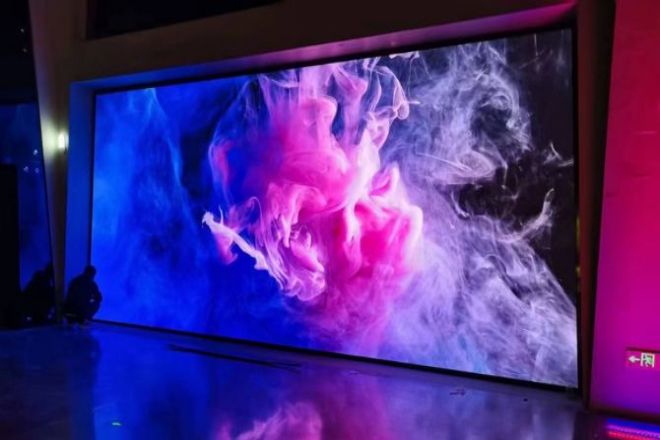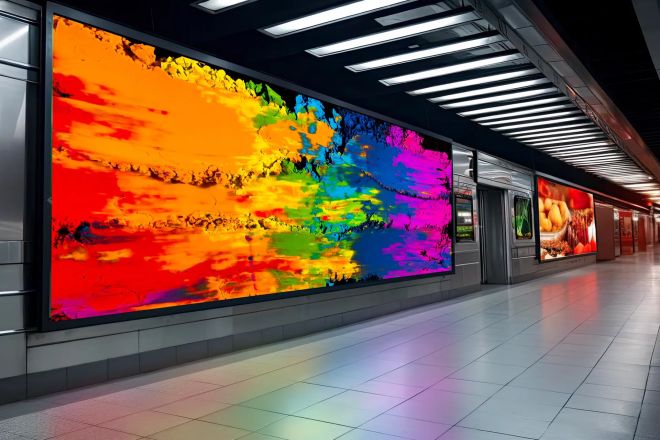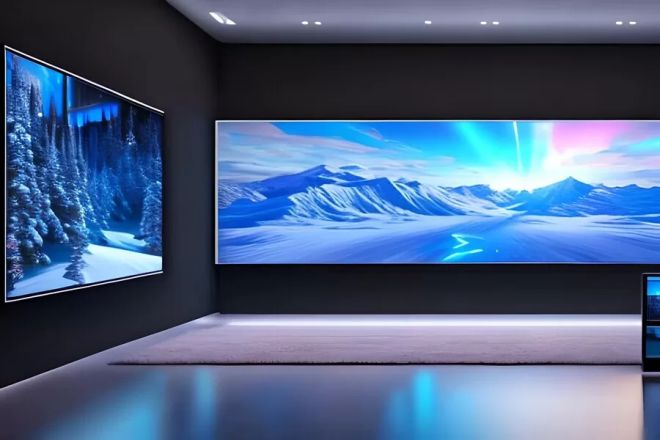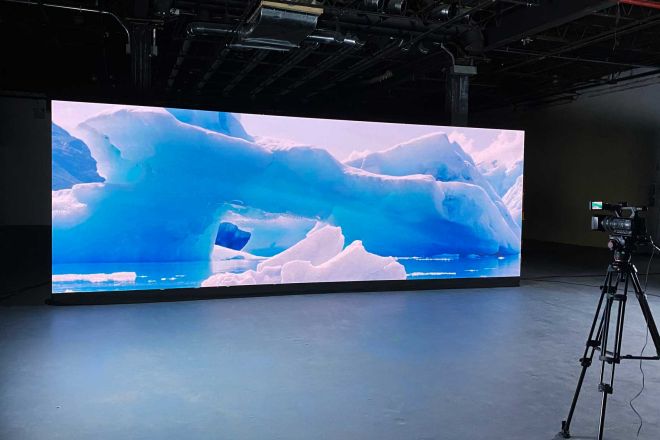Introduction

Avec le développement rapide de la science et de la technologie, Afficheurs LED are widely used in various fields, such as commercial advertising, sports events, and public information release, due to their high brightness, high definition, and long life.
However, as the use time increases, many users may find that the display effect of the LED display gradually becomes blurred, which not only affects the effective transmission of information but may also have a negative impact on the brand image.
The blur problem of LED displays may be caused by a variety of reasons, including but not limited to dust accumulation on the screen surface, aging of LED lamp beads, damage to pixels, and failure of the drive circuit. These factors may cause the brightness of the display to decrease, the contrast to decrease, and even color distortion to occur, making the displayed content blurry.
In order to solve the problem of blurry LED displays, we first need to understand the root causes of these blurring phenomena and then take targeted measures to repair and maintain them.
1. Under what circumstances will the LED display become blurry?

During long-term use, the display effect of LED displays may become blurred due to various reasons. Here are some common situations that cause LED displays to become blurry:
- Physical wear and tear:
The accumulation of dust and dirt on the screen surface will directly affect the display effect and make the screen blurry. These dust and dirt may be caused by various factors such as air pollution in the environment, cleanliness of the place of use, and human operations.
Environmental factors such as poor air quality and excessive dust in the use site will aggravate the pollution on the screen surface, thereby affecting the display effect.
- Light source aging:
LED lamp beads are the core component of the display screen, and their brightness will gradually decrease with time of use. When the LED lamp beads age, the overall brightness of the display screen will decrease, and the color will become dim, resulting in a blurred display effect.
The working principle of LED lamp beads is to stimulate semiconductor materials to emit light through current. Over time, the performance of semiconductor materials will gradually decrease, resulting in reduced brightness of LED lamp beads.
- Corrupted pixels:
The display screen is composed of a large number of pixels, each of which is responsible for displaying a color. When some pixels fail or have abnormal brightness, it will cause problems such as blurred display and uneven colors.
Causes of pixel damage may include overheating, overvoltage, unstable current, etc. These factors may cause damage to pixels, thereby affecting the display effect.
- Drive circuit failure:
The drive circuit of the display screen is responsible for controlling the brightness and color of each pixel. When the drive circuit fails, it will cause an abnormal display of pixels, thus affecting the display effect of the entire display screen.
Common faults in drive circuits include aging components, poor welding, short circuits, etc. These faults can cause pixels to not work properly, causing the display to become blurry.
2. Methods to solve blurry LED display screen

When the LED display screen appears blurry, we can take the following methods to solve it to ensure that its clarity and performance are restored:
1). Cleaning and maintenance
Nettoyage régulier : To ensure the clear display of the LED display, regular cleaning of dust and dirt on the screen surface is essential. The accumulation of dust and dirt can significantly reduce the brightness and clarity of your display.
Cleaning method: When cleaning, it is recommended to use a special cleaner and gently wipe the screen surface with a soft cloth or paper towel. Avoid using chemical solvents or abrasive cleaners to prevent damage to the screen.
Note: During the cleaning process, be sure to avoid excessive force to avoid scratching the screen or damaging the screen surface. Also, make sure to turn off the display and disconnect from the power source when cleaning to avoid accidental electric shock.
2). Replace LED lamp beads
Reduced brightness: When the brightness of certain areas of the LED display is significantly reduced, resulting in a blurred display, it may be the cause of the aging of the LED lamp beads. At this time, you need to consider replacing the LED lamp beads.
Judgment criteria: Decreased brightness, color distortion, flickering, or partial black screen are all symptoms of LED lamp aging. You can judge whether the LED lamp beads need to be replaced by observing these phenomena.
Replacement steps: When replacing LED lamp beads, you need to choose products with the same specifications and models as the original lamp beads to ensure compatibility. Follow the display’s disassembly and assembly guide to carefully remove and replace damaged lamp beads. At the same time, pay attention to power-off operations to ensure safety.
Effect evaluation: After the replacement is completed, an effect evaluation of the display is performed to ensure that brightness, color, and clarity are restored.
3). Repair pixels
Pixel failure: When some pixels of the display screen fail or the brightness is abnormal, the display effect will be blurred. At this point, repair measures need to be taken.
Repair technology: Pixel repair technology includes massage and compression methods, software repair methods, and small-pitch display repair technology. The massage and compression method is suitable for slightly failed pixels and restores their normal functions by applying a certain amount of pressure. The software repair method uses specialized software tools to repair pixels. For small-pitch displays, local repair technology can be used to repair damaged pixels.
Repair steps: When repairing pixels, you need to follow the correct steps and precautions. First, determine the location and number of failed pixels. Then, choose the appropriate repair technique based on the situation. During the repair process, avoid damaging surrounding pixels and ensure safe operation.
Effect evaluation: After the repair is completed, an effect evaluation of the display is performed to ensure that the display effect is improved.
4). Check and repair drive circuits
Driving circuit failure: When the display screen appears blurry and cannot be solved by other methods, the driving circuit may be faulty. At this time, the drive circuit needs to be inspected and repaired.
Diagnostic methods: Diagnostic methods for drive circuit faults include observing the display screen phenomenon, using multimeters and other tools to detect circuit components, etc. By observing the brightness, color, and clarity of the display screen, you can initially determine whether there is a drive circuit failure. Then, tools such as a multimeter are used to test the circuit components and determine the specific location and cause of the fault.
Repair steps: When repairing the drive circuit, you need to follow the correct steps and precautions. First, disconnect power from the display to make sure it’s safe. Then, based on the diagnosis results, damaged components are replaced, breaks or short circuits are repaired, etc. During the repair process, pay attention to using the correct tools and operating methods to ensure the quality of the repair.
Effect evaluation: After the repair is completed, an effect evaluation on the display is performed to ensure that the fault has been eliminated and the display effect has returned to normal.
3. Daily maintenance and maintenance of LED display screen

In order to ensure the long-term stable operation of the LED display and maintain good display effects, daily maintenance and upkeep work is crucial. The following are suggestions for daily maintenance and care of LED displays:
- Use environment requirements
Maintain proper temperature and humidity. LED displays usually perform best in an environment with a temperature range of -10°C to 50°C and a humidity of no more than 90% (non-condensing). Avoid using the display in extreme temperatures or humidity environments to extend its lifespan.
Avoid direct sunlight. Prolonged exposure to sunlight may cause the surface temperature of the display to rise, affecting the display effect and lifespan. Choose an appropriate location when installing, or use shading facilities to reduce direct sunlight.
Avoid humid conditions. A humid environment may cause short circuits or corrosion in the display’s internal circuitry, so make sure the display is installed in a dry and ventilated environment.
- Inspection et entretien réguliers
Regularly check the brightness, color, and other performance of the display. Regular inspections can detect problems with the display in time and take appropriate measures to repair them. For example, if you find a decrease in brightness or color distortion, it may be that the LED lamp beads are aging or the drive circuit is faulty and needs to be replaced or repaired in time.
Get regular professional maintenance. Ask professionals to clean and inspect the display screen regularly, including cleaning the dust and dirt on the screen surface, checking the circuit board and connecting lines, etc. In addition, you can also perform operations such as tightening screws on the display to ensure its stability and safety.
- Fair use
Avoid prolonged continuous use. Continuous use for a long time may cause the internal temperature of the display to rise, thereby affecting the display effect and lifespan. It is recommended to set a scheduled break function during use or turn off the display when not needed.
Avoid using excessive brightness or contrast. Although high brightness and contrast can make the display more vivid and clear, using too high brightness and contrast for a long time may cause damage to the eyes. Adjusting the brightness and contrast to a comfortable level is recommended based on actual needs and environmental conditions.
By following the above recommendations for daily care and maintenance, you can ensure the long-term stability of the LED display and maintain good display effects while extending its service life and reducing maintenance costs.
Conclusion
To sum up, solving the problem of blurry LED displays requires us to comprehensively consider many aspects, from cleaning and maintenance to repair and maintenance to daily use and maintenance, all of which need to be done carefully.
Enfin, si vous souhaitez en savoir plus sur les écrans LED, veuillez nous contacter.
